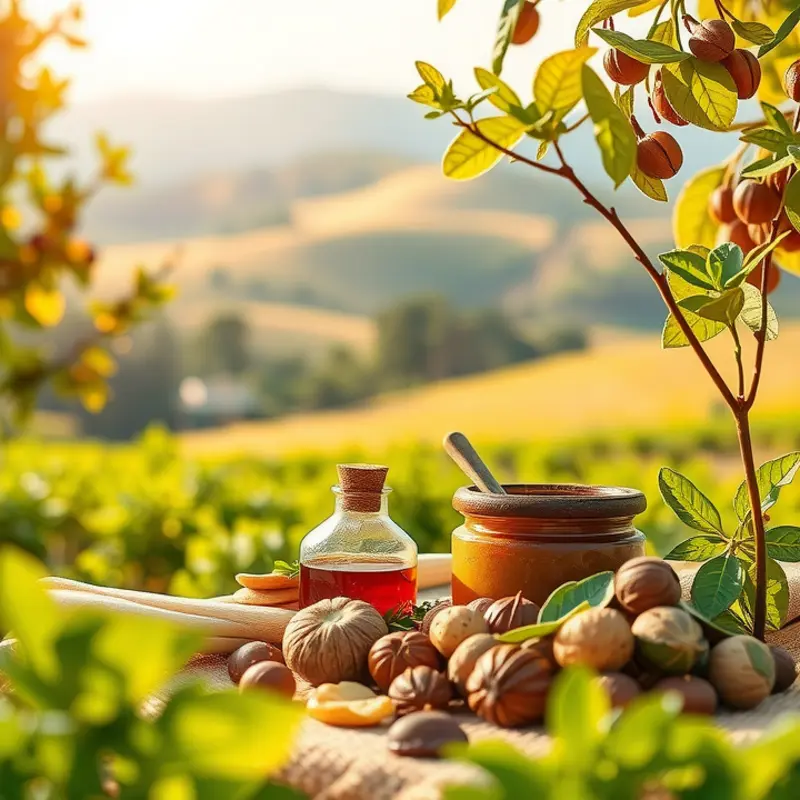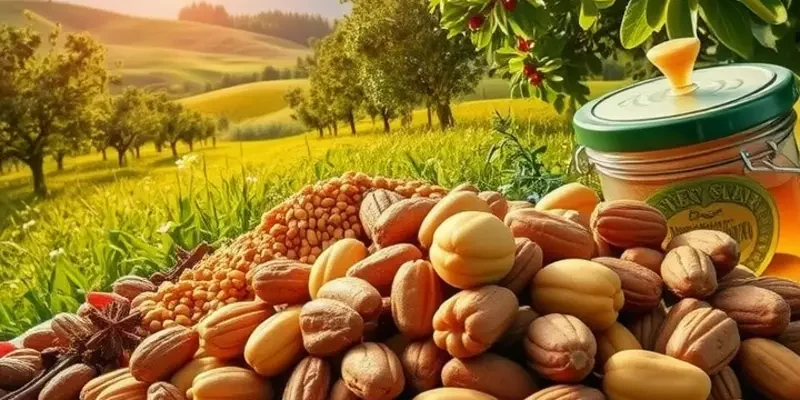Pastry making is an art form that reflects the unique flavors, customs, and histories of cultures around the globe. From flaky éclairs to sweet baklava, desserts are often steeped in tradition and sentiment, serving not just as treats, but as cherished rituals within each community. This exploration dives into two captivating chapters that unveil the rich diversity of regional pastry traditions, inviting food enthusiasts and culturally-curious readers to savor the stories behind these delectable delights.
Sweets from the Silk Road: The Delights of Baklava and Beyond

The journey through the Silk Road offers a window into the diverse world of pastries that have delighted cultures for centuries. Baklava, a symbol of the Middle East and Mediterranean culinary landscapes, serves as a gateway into this sweet realm. This pastry, with its delicate phyllo layers hugging a decadent filling of nuts, clings to tradition as firmly as it exudes sweetness. Each bite, enriched with honey or syrup scented with lemon, narrates stories from lands that trade and time have conjoined.
Baklava’s roots can be traced to the kitchens of the Ottoman Empire, reflecting Greek and Turkish influences. Over time, each culture along the Silk Road infused its essence into the pastry. Whether it’s the luxurious touch of pistachios preferred in Turkey or the aromatic cinnamon and walnuts often used in Greek variants, the region’s flavors unite within its crisp confines.
Beyond this iconic pastry, Iran’s Saffron Semolina Cake exemplifies the Persian knack for combining elegance with exotic aromas. Known locally as “Revani”, this dessert highlights saffron’s vibrant hues and floral notes. Saffron, a staple in Persian kitchens, is prized for its subtle yet distinctive fragrance, transforming simple semolina into a delicacy fit for royalty.
Travel further into Turkey and discover multiple interpretations of sweets that incite confectionery envy. Künefe, an intriguing twist on Baklava, features a melted cheese core cloaked in shredded phyllo, browned to crispy perfection. It’s generously drenched in syrup, similar to its nutty cousin, yet tinged with a savory note. Similarly, Lokum, or Turkish Delight, offers an assortment of flavors packed into bite-sized gelatinous squares that melt languidly on the tongue.
But the Silk Road’s legacy does not end there. Journeying across regions reveals gems such as Afghanistan’s Sheer Khurma, a festive vermicelli pudding lavishly adorned with dates, nuts, and cardamom. In Lebanon, subtle sweetness in the form of Knafeh bursts forth, filling an orange-tinted pastry with a blend of cheese and semolina. Sweet syrup imbues every bite, whisking taste buds along ancient trade routes.
Each pastry along the Silk Road resonates with the regional produce it showcases, crafting an edible memoir of local life. From the spices that whisper the stories of perfumed bazaars to the nuts that speak of fertile lands, these ingredients are the very essence of the region’s identity. While the Silk Road was once a route for trade goods, its trail has become a map of shared culinary heritage.
As modern meals often incorporate global influences, these ancient recipes have found renewed appreciation among adventurous palates willing to explore. For those curious about how cultures have influenced each other through cuisine, the intricating culinary influences of trade provide captivating insights echoing through generations. Indeed, the Silk Road’s sweets reveal a tapestry of flavors bound together by history and harmonious taste.
From Paris to Buenos Aires: The Global Love for Pastries

As we traverse the globe, pastries offer a deliciously sweet lens into the diverse cultures they stem from. The French have long been revered for their delicate tarts, where mastery in creating a buttery, flaky crust is celebrated with every bite. These tarts often burst with freshness from fruit toppings that change with the seasons, a testament to France’s dedication to culinary purity and technique.
Journeying to Italy, we encounter the iconic cannoli. Hailing from Sicily, these crunchy, tube-shaped pastries are filled with sweetened ricotta, lightly flecked with chocolate or candied fruit. They reflect a vibrant heritage combining Italian creativity with influences from the Arab world, brought by historical trade and conquests, themes explored more deeply on culinary influences through trade.
In Portugal, one cannot escape the allure of the Pastéis de Nata. These egg custard tarts are embraced by locals and travelers alike. Their slightly scorched top, surrounded by a feather-light crust, mirrors the confluence of Portugal’s past: a history rich with maritime discoveries and the perfecting of sugarcane use, marking their robust presence in Portugal’s culinary traditions.
Our journey continues in South America, where Argentina brings us the delightful alfajores. These tender cookies layered with dulce de leche and often rolled in coconut or coated in chocolate, tell a story of adaptation. Spanish immigrants crafted alfajores, melding existing confectionery traditions with locally sourced ingredients, leading to a beloved national treat that captures Argentina’s eclectic cultural landscape.
Across these regions, pastry-making often relies on secrets passed down through generations. In France, the art of pâte sucrée, providing the foundation of many delicate tarts, is something bakers hold dear. In contrast, the precise rolling technique critical to achieving the perfect cannoli shell speaks to the laborious craftsmanship inherent in Italian desserts.
These pastries not only serve as delightful treats but as cultural markers, embodying stories of migration, adaptation, and innovation. While methods and ingredients diverge, the universal language of baking binds the chapters of our shared history with a thread of sweet delight, encouraging us to savor what makes each culture distinct and wonderful.
Final words
The world of pastries is rich with history, culture, and a delightful array of flavors. As we journey through various regions, we discover that each pastry not only satisfies our sweet tooth but also embodies stories of tradition and community. From the intricate layers of baklava to the comforting simplicity of a humble alfajor, these treats invite us to explore the world and appreciate the beautiful tapestry of human creativity. So the next time you indulge in a pastry, take a moment to savor not just the flavor but the heritage behind every bite.








